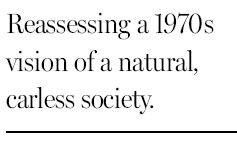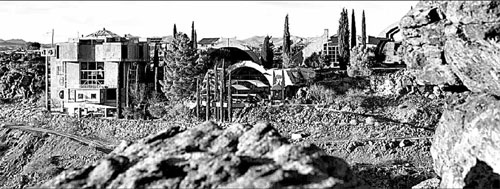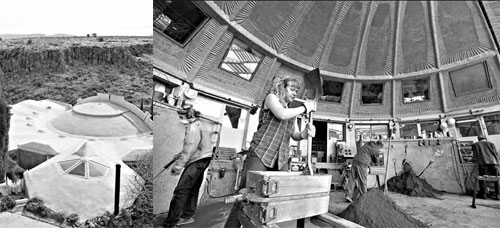Faltering futuristic city hanging on
Updated: 2012-05-13 07:49
By Michael Tortorello(The New York Times)
|
|||||||||
|
Photographs by John Burcham for The New York Times |
|
Arcosanti is an "urban laboratory" in Arizona. Above, the foundry where ceramic and bronze wind bells are cast. |
CORDES JUNCTION, Arizona - It is an ultramodern compound rising above a desert canyon: an ever-unfinished city upon a hill.
Occupying the middle of nowhere must have appealed to the students, architects and seekers of the 1970s who founded Arcosanti, an "urban laboratory" in the desert 110 kilometers north of Phoenix, Arizona. After following a washboard road to the desolate camp, they would find a kind of kibbutz. Here, in workshops, they might build a nine-meter-high concrete vault or plant olive trees or cast bells in silt to sell for construction money. The average salary is minimum wage.
Above all, they were able to join an ongoing colloquy with the city's visionary designer, Paolo Soleri, who proselytized for a carless society in harmony with the natural world. In the 40 years since, some 7,000 people have come and gone from Arcosanti.
For the most part, though, they left. And last autumn, Mr. Soleri himself retired at age 92 as the president of the parent Cosanti Foundation. Now Arcosanti is in transition under Jeff Stein, 60, a former dean of the Boston Architectural College.
And the question he faces is: if Arcosanti cannot finally be transformed into a dense eco-city for 5,000 residents - as was always Mr. Soleri's plan - what should it be instead?

Mr. Stein's immediate proposals: a canopy for the outdoor amphitheater, a renovated commercial bakery, a storage unit for Mr. Soleri's collection of fantastical architectural models and a half-dozen new apartments.
Mr. Stein says he has a budget of less than $1 million, about a tenth of what he needs to turn a somewhat derelict complex of a dozen-odd concrete structures into something more like a city.
His first job, perhaps, is to remind the world that Arcosanti still exists as a going concern. Visitors (some 25,000 stop here each year) often observe that this city of the future seems more like a city of the past. But 56 people continue to live and work here.
Among them is Maureen Connaughton, 37, who until last year was a project manager in Philadelphia for a specialty fabrication company. At a building workshop here in 2010, she discovered how much she liked working with her hands. Back in Philadelphia, Ms. Connaughton loaded up the car and headed west to cast ceramic wind bells.
"I really heard all the good and bad things people say about it being set in the past," she said of Arcosanti. "And I want to see it set in the present. Because it's my present."
Smart young volunteers continue to trek here from faraway places like Australia, South Korea, Mexico, Chile, Italy and Jordan, paying to enroll in the construction workshops. A few will decide to stay.
The residents pay just $160 a month for room and board.
"There are intentional communities all over the country," Mr. Stein said. "This isn't one of them. It's almost an accidental community. People were drawn here by Paolo Soleri and the power of his ideas."
The architectural intern Youngsoo Kim, 32, said he followed the beacon of Mr. Soleri's writing to this sparse outpost from the megalopolis of Seoul.
The construction "could have been done much better," Mr. Kim said. "But it was also meaningful for it to be built by the people who learned the concept."
The compound's heating, windows and insulation seem to have been an afterthought. The project has only dabbled in popular technologies like solar panels, rain barrels and composting toilets.
"I should have them," Mr. Soleri said during a recent visit to the project. Yet for most Americans, he maintained, chasing these technologies can become a game unto itself.
Mr. Soleri can discuss his flawed creation with disarming frankness. Has Arcosanti lived up to its potential? "No, don't be silly," he said.
His theories about pollution, waste and energy depletion have never been more compelling in the marketplace of ideas. Yet it's hard to argue that his skeletal settlement represents the city of tomorrow, said Dennis Frenchman, 63, a professor of urban design at the Massachusetts Institute of Technology.
Mr. Frenchman admired Mr. Soleri's invention. But "I don't think it's taken seriously as an urban model," he said. "It's really a historical curiosity."
Just about everyone is hoping that Mr. Stein will be able to revitalize Arcosanti. But even in its current state, Arcosanti must be more practical than the 460,000 housing units sitting empty in Arizona.
Everything here is paid for, Mr. Stein said. "We don't have a mortgage."
The New York Times
(China Daily 05/13/2012 page12)

